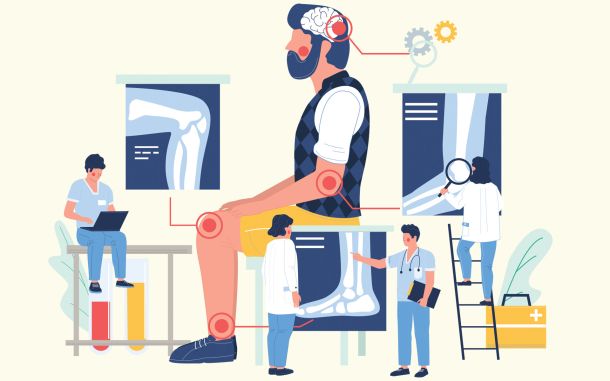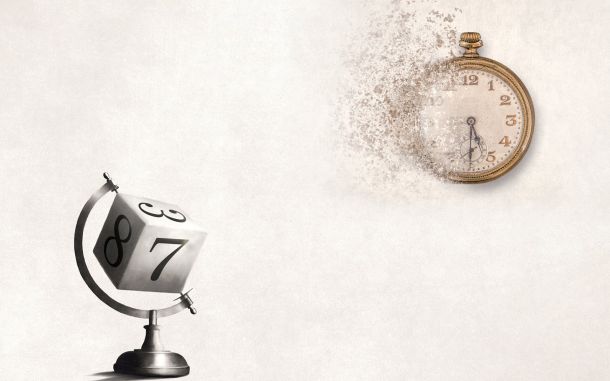Pharmacodynamics

In This Article
-
Pharmacodynamics is the study of the biochemical, physiological, and molecular effects of drugs on the body.
-
All drugs produce their effects by interacting with biological structures or targets at the molecular level, inducing a change in how the target molecule functions in regard to subsequent intermolecular interactions.
-
Disorders that affect pharmacodynamic responses include genetic mutations and different diseases.
When someone has a headache, they take a pain reliever; usually, the pain soon goes away. If a child has a fever, its parents will give them an antipyretic to reduce the fever. How do these drugs work? What effects do they have on the body? In the previous issue of The Fountain, we covered Pharmacokinetics and explored what our body does to a drug when we take one. In this issue we will explore pharmacodynamics, in other words, what a drug does to our body.
Pharmacodynamics is the study of the biochemical, physiological, and molecular effects of drugs on the body. It comes from the Greek words "pharmakon," meaning "drug," and "dynamikos," meaning "power." Dynamo typically refers to energy or power. But in terms of pharmacodynamics, it refers to how the drug works and how it exerts its power on the body. Pharmacodynamics describes how biological processes in the body respond to or are impacted by a drug. Understanding the basics of pharmacodynamics provides answers to questions such as, “how does this drug work?” and, “how much of a drug is needed to safely treat the patient?”
All drugs produce their effects by interacting with biological structures or targets at the molecular level, inducing a change in how the target molecule functions in regard to subsequent intermolecular interactions. These interactions include receptor binding, post-receptor effects, and chemical interactions. The pharmacological response depends on the drug binding to its target. The concentration of the drug at the receptor site also influences the drug’s effect. By testing large concentrations of a drug in a lab, a drug’s maximum effect can be determined.
Receptor principle
The most common way a drug works is by interacting with tissue receptors located either in cell membranes or in the intracellular fluid. Receptors respond to specific neurotransmitters, hormones, antigens, chemicals, or substances. A chemical (ligand) binds to a specific site (receptor) and triggers a response (signal) in the cells. The intracellular changes initiated by the ligand–receptor complex can be through direct or indirect action; however, the ligand generally functions as either an agonist or an antagonist. An agonist will mimic the endogenous ligand to produce a similar response (e.g., morphine is an agonist for opioid receptors), whereas an antagonist blocks the usual ligand and thus inhibits the physiologic response (e.g., naloxone is an antagonist for opioid receptors).
When drug molecules bind with receptor molecules, the drug–receptor complex initiates physiochemical reactions that stimulate or inhibit normal cellular functions. One type of reaction involves activation, inactivation, or other alterations of intracellular enzymes. Because almost all cellular functions are catalyzed by enzymes, drug-induced changes can markedly increase or decrease the rate of cellular metabolism.
A second type of reaction involves changes in the permeability of cell membranes to one or more ions. The receptor protein is a structural component of the cell membrane, and by binding to a drug molecule, it may open or close ion channels.
A third reaction may modify the synthesis, release, or inactivation of the neurohormones (e.g., acetylcholine, norepinephrine, or serotonin) that regulate many physiological processes.
There are some additional characteristics to keep in mind about drug-receptor bindings:
- The site and extent of a drug’s effect on the body’s cells is determined primarily by the specific characteristics of receptors and drugs. Receptors vary in type, location, number, and functional capacity.
- The number of receptor sites available to interact with drug molecules also affects the extent of a drug’s effect. A minimal number of receptors must be occupied by drug molecules to produce pharmacological effects. If many receptors are available but only a few are occupied by drug molecules, few drug effects occur. In this instance, increasing the drug dosage increases the pharmacological effects. Conversely, if only a few receptors are available for many drug molecules, receptors may be saturated. In this instance, if most receptor sites are occupied, increasing the drug dosage produces no additional pharmacological effect.
- Once a drug action occurs, drug molecules may detach from receptor molecules (i.e., the chemical binding is reversible), return to the bloodstream, and circulate to the liver to be metabolized and the kidneys for excretion.
- Receptors are dynamic cellular components that can be synthesized by body cells and altered by endogenous substances and exogenous drugs. For example, prolonged cellular stimulation by an agonist usually reduces the sensitivity of the receptors. As a result, the cell becomes less responsive to the agonist (a process called receptor desensitization or down-regulation). Prolonged inhibition of normal cellular functions with an antagonist may increase receptor sensitivity. If the antagonist is suddenly reduced or stopped, the cell becomes excessively responsive to an agonist (a process called receptor upregulation). These changes in receptors may explain why some drugs must be tapered in dosage and discontinued gradually if withdrawal symptoms are to be avoided.
Some drugs acting at the same receptor (or tissue) differ in the magnitude of the biological responses that they can achieve (efficacy) and the amount of the drug required to achieve a response (potency). Drug receptors can be classified on the basis of their selective response to different drugs. Constant exposure to drugs sometimes leads to a reduced response (desensitization).
How can a drug’s pharmacodynamics be affected?
A drug’s pharmacodynamics can be affected by physiological changes due to
- A disorder or disease
- Aging
- Other drugs
Disorders that affect pharmacodynamic responses include genetic mutations and different diseases. These disorders can change receptor binding, alter the level of binding proteins, or decrease receptor sensitivity. Aging tends to affect pharmacodynamic responses through alterations in receptor binding or in post-receptor response sensitivity. Pharmacodynamic drug–drug interactions result in competition for receptor binding sites or alter post-receptor responses.
A drug’s action may be increased or decreased by its interaction with another drug. Most interactions occur whenever the interacting drugs are present in the body; some, especially those affecting the absorption of oral drugs, occur when they are given at or near the same time. The basic cause of many drug–drug interactions is altered drug metabolism. For example, drugs metabolized by the same enzymes may compete for enzyme binding sites, and there may not be enough binding sites for two or more drugs. Also, some drugs induce or inhibit the metabolism of other drugs.
Protein binding is also the basis for some important drug–drug interactions. A drug with a strong attraction to protein-binding sites may displace a less tightly bound drug. The displaced drug then becomes pharmacologically active, and the overall effect is the same as taking a larger dose of the displaced drug.
At pharmacodynamic level, there are four kinds of drug interactions:
- Additive: occurs when two or more drugs combine to produce an effect greater than the effect of either drug taken alone. (Additive: 1 + 1 = 2).
- Synergistic (hyper additive: 1 + 1 = 6).
- Potentiation: a drug with no effect is combined with another drug to cause a greater effect (1 + 0 = 2)
- Antagonistic: one drug weakens or cancels out the effect of another drug.
Drugs and humans: an analogy
Interactions between drugs are similar to interactions between humans. Sometimes the person who comes into our life adds value to our lives only as much as their own value but does not change our potential. Some people, on the other hand, help us go beyond our own potential by adding synergy to our lives. Some people are not our equal, although they allow us to exceed our potential, and it may be necessary to carry such people as a burden. Some other completely block our lives and prevent us from having a positive effect, just as they do not produce any effect themselves. Since we will encounter all types of people throughout our lives, we must be prepared for all of them. And we should keep this in mind the next time we put a drug into our body.
Figure 1. The receptor theory

References
- https://www.merckmanuals.com/professional/clinical-pharmacology/pharmacodynamics/overview-of-pharmacodynamics
- https://en.wikipedia.org/wiki/Pharmacodynamics
- Pharmacodynamics Mark Marino; Zohaib Jamal; Patrick M. Zito.
- http://www.pharmacologyeducation.org/clinical-pharmacology/clinical-pharmacodynamics
- Clinical Drug Therapy: Rationales for Nursing Practice - Seventh 7th Edition, Lippincott Williams &Wilkins.









